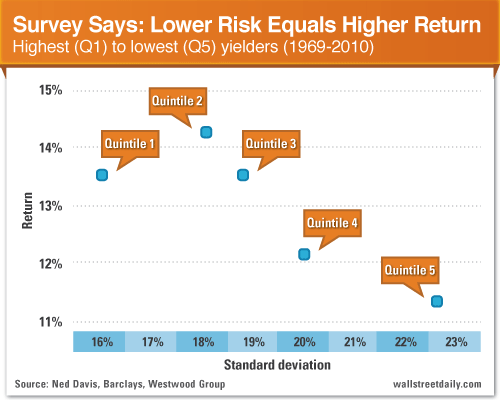Low volatility is a myth and that s good news
Post on: 16 Март, 2015 No Comment

Getty Images
Trader on the floor of the New York Stock Exchange, May 21, 2014.
Investor wariness of stock market volatility may only appear to be low.
Traditional measures of market complacency show it at levels rarely seen since before the financial crisis—and headed toward historic troughs. Most notably, the CBOE Volatility Index has been on a consistent downtrend throughout 2014, despite an unexpectedly weak economy in the first part of the year and almost daily geopolitical disruptions.
Looking at implied volatility rather than historic volatility gives a different picture of market expectations. (Historical volatility measures daily price movements while implied volatility looks at expected price changes.)
Nicholas Colas, chief market strategist at ConvergEx, analyzed the measure and found rising levels among about two-thirds of the widely followed index.
Scratch the surface of the market, and you will actually find rising implied volatility, Colas said in a note to clients. We’ve included the one-month changes in implied volatilities for the 30 companies of the Dow Jones Industrial Average. and the results of the analysis are surprising.
Among the companies experiencing surges in implied volatility are General Electric. United Health ,Intel. IBM and Nike. all of which showed levels up more than 20 percent. Only Pfizer showed a greater than 20 percent decrease in implied volatility.
So is the market truly as complacent as the headline CBOE VIX Index numbers indicate? Colas said. When you look at individual names, the answer is ‘no.’
And that could be a good thing, he said.
As correlations drop—something they’ve just started to do—single securities will chart their own path and reflect their own unique risk profile, he said. That should result in a more stable market overall, rather than the ‘risk on, risk off’ patterns of the last five years. Lower overall volatility can still come with rising volatility for individual names.
The next place to look for a lack of complacency is investor sentiment, or more specifically actual investor behavior.
Sentiment indexes like the American Association of Individual Investors and Investors Intelligence have been all over the place this year, with the latter showing high levels of bullishness but the former vacillating and showing particularly elevated neutrality.
Savita Subramanian, the bullish equity and quant strategist at Bank of America Merrill Lynch, believes the notion that there is a high level of complacency in the market is a myth.
Subramanian uses the firm’s own Sell Side Indicator, which gauges the level of allocations among Wall Street strategists to stocks vs. bonds. According to the latest readings, consensus allocations are just 51 percent toward stocks, which falls well within the parameters of what the firm considers a buy signal and reflects considerable wariness of equities.
The contrarian indicator triggers a sell when allocations exceed 66.2 percent and a buy when below 54.2 percent. The historical average is 60.2 percent.
Indeed, when it comes to investing, fear can be your friend.
We’re now at a point where your average Wall Street firm is recommending you put about half of your money in equities, Subramanian said at a media briefing Wednesday. I think that’s surprisingly low given that competing asset classes—bonds—don’t look particularly attractive.
The fact that Wall Street is still allocating such a low level to equities suggests to me that there is still more upside risk than downside risk in the market, she added. This is far from the level of euphoria that typically precedes a bear market in equities.
—By CNBC’s Jeff Cox














